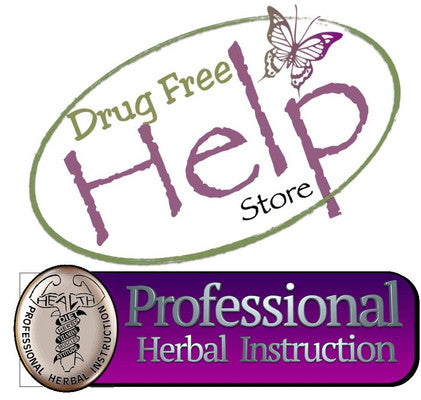6 Factors to Consider When Shopping for Supplements
Posted by nicole on

Kathy and Victor, a Los Angeles-based couple in their 60s, had their share of health issues. She’d undergone multiple surgeries to fix a defective bladder mesh, which left her with chronic fatigue and urinary tract infections. And he was dealing with type 2 diabetes and poor liver health from a hepatitis C infection. They took prescription medications, and while they were both getting by in life, they knew they could feel better. This is what led them to explore natural healing options, particularly supplements. But they had a lot of questions—more questions than answers.
Here’s where Kathy and Victor’s story becomes relatable to most everyone who takes supplements. Fifty, 40, even 30 years ago, buying supplements was less complicated. Choices were limited and often centered on multivitamins, some herbs and other nutrients, and single vitamins. Today, the supplement market is buzzing with options. And it’s not just the number of products available, but also the ingredients used in formulas—and the companies making them—that separate good from great supplements. Here are some suggestions to help you navigate the supplement aisle and find the best quality products to suit your needs.
1. If It Sounds Too Good to Be True, It Probably Is
This seems like a no-brainer, but marketing claims can be deceptive. “If a supplement claims that it should do something that you know requires more than a pill, be wary,” says Ashley Koff, RD, author and creator of Ashley Koff Approved and the Better Nutrition Program. “The front of the package is like an online dating profile—they are trying to woo you with all of their best attributes. Turn it over to see what they aren’t saying on the front.”
Keep in mind that both the FDA and the Federal Trade Commission (FTC) monitor manufacturers to ensure supplements are accurately labeled and contain authentic claims. Under the FDA’s Good Manufacturing Practices (GMPs), companies are required to substantiate the identity, purity, quality, strength, and composition of their ingredients.
2. Do Some Research
“We are living in the information age,” says Daniel Fabricant, PhD, president and CEO of the Natural Products Association. “Take advantage of this by researching companies and asking questions: Is the company transparent about their ingredients? Do their products have important certifications? Are their formulas third-party tested?” For products that say “third-party tested” on labels, this means that an outside organization has verified that what’s on the label is in the product.
It might seem obvious, but the easiest way to gather this information is simply to poke around a company’s website. Fabricant also recommends the following two websites if you want to dig deeper into research on alternative remedies. There is also a consumer section on the NPA’s website with extensive information on supplements, regulations, and buying tips.
- Clinicaltrials.gov : A database of clinical trials conducted around the world. “Look for companies who invest in research,” says Fabricant. “In general, they are committed to manufacturing high-quality, effective products.”
- National Center for Complementary and Integrative Health (nccih.nih.gov): This federal government agency oversees scientific research on medical practices and therapies that fall outside the field of conventional medicine.
3. Look for Transparency
“We want to know what we are taking in,” says Koff. “Is it better for us, the planet, and the people who are growing and harvesting the ingredient?” Today, manufacturers are creating a transparency revolution through certification programs (see sidebar, below), ingredient traceability, and even detailed information on the farms and farmers growing their ingredients. Many even have their own farms.
Here’s where you actually do want to judge a book by its cover—companies that are committed to transparency and to using superior ingredients are proud to advertise it on their labels. “If you choose organic and non-GMO foods, if you avoid artificial colors and sweeteners most of the time, if you choose humanely raised wild fish, etc., you should do the same with your supplements,” says Koff.
4. Seek Out the Active Form
Certain nutrients can be harder to absorb for some, such as vitamin B (try the methylcobalamin form) and folate (look for 5-MTHF). Fortunately, many of these are now available in forms your body can assimilate and utilize more efficiently (look for the words “bioavailable,” “optimized,” or “active form” on labels). This is especially the case if you’re over 40, as digestion starts to grow sluggish with age. This doesn’t mean, however, that traditional forms of nutrients are ineffective. Everyone’s body is different, so keep that in mind.
5. Ask Yourself, “Why Am I Using This?”
Supplements help prevent nutritional gaps, aid in replenishing stores of essential vitamins and minerals, and provide therapeutic support (as a complement or alternative to medication), says Koff, who believes a product “should do one or all three of these.” It’s important to have a “why” when deciding on whether to use a supplement, says Fabricant. “Do you really need 1,200 mg of vitamin D a day? Get your levels checked and then pick out a supplement that meets your needs,” he says.
6. Shop at Brick & Mortar Stores
There are few people as passionate and knowledgeable about supplements as health food store owners and their employees. When you buy a product online, you’re missing out on advice from seasoned professionals. Health food retailers know what works based on customer feedback, and they are intimately familiar with different formulations. Best of all, they love helping people find a product that works.
Supplement Certifications Guide
You’ll find a variety of bona fide certifications on supplement labels— here are four of the more common ones you’re likely to encounter.
USDA Organic

What It Means: The products’ ingredients have been produced according to rules set by the USDA Organic Program, as well as certified by a third-party organization approved by the USDA. Organic ingredients cannot contain genetically modified organisms (GMOs).
Non-GMO Project Verified

What It Means: Ingredients are free of GMOs and have been tested and authenticated by the Non-GMO Project Product Verification Program, a nonprofit, third-party organization for food and products.
Gluten-Free Certification Organization (GFCO)

What It Means: Products undergo a stringent process, certifying that they contain no more than 10 parts per million (ppm) of gluten. This certification comes from The Gluten Intolerance Group (GIG), a nonprofit dedicated to consumer support, advocacy, and education.
Certified B Corporation

What It Means: Manufacturers must meet rigorous standards of social and environmental performance, accountability, and transparency, determined by the nonprofit organization B Lab. This is a prestigious certification that is not easily attained.
Yes, Supplements Are Regulated: Watch the Video

The Natural Products Association (NPA) has created a helpful, 16-minute video to educate consumers about supplement regulations. Visit the NPA’s YouTube channel to view this and other videos on supplements.
NSF: The Mark of Quality
There’s no way to tell with the naked eye whether your ginkgo supplement really contains 120 mg of Ginkgo biloba extract, or if heavy metals are lurking in your favorite sports nutrition powder—unless you see the NSF certification mark on the label. An independent and accredited nongovernmental organization, NSF certifies supplements based on a rigorous, multipronged process. Its seal has become synonymous with superior-quality products. When you see an NSF certification mark on a label, it means:
- The manufacturer’s facility has been audited to comply with the FDA’s Good Manufacturing Practices (GMPs) requirements and the industry’s best practices.
- The formula and label claims have been verified through toxicological reviews.
- The label has been checked to authenticate that what’s on the label is what’s in the product.
- Testing has been done to ensure there are no harmful levels of contaminants, such as heavy metals and pesticides.
- In addition to the above, NSF scientists perform ongoing audits and testing to make sure manufacturers are adhering to certification codes.
BN’s Guide to Proprietary Ingredients

You may have noticed registered trademarks on the “Supplement Facts” portion of labels. In most cases, this means that the ingredient (or combination of ingredients) is patented and/or features a patented process. These unique forms are made by ingredient suppliers, so you’ll find them in a variety of supplement brands. The advantage to buying these exclusive kinds of ingredients? They are usually clinically tested for efficacy and standardization. And they tend to boast higher absorption rates. Here are some to consider:
Ingredient:** Ashwagandha **** Proprietary forms:** KSM-66 (contains only the roots, which are processed using a unique solvent-free extraction process), Sensoril (an organic, non-GMO blend of the leaves and roots of Withania somnifera).
Ingredient:** Astaxanthin ***Proprietary forms:* AstaREAL, BioAstin (both are “optimized” for superior absorption using advanced processing methods; visit the companies’ websites to learn more).
Ingredient:** Cranberry **** Proprietary form ***:* Cran-Max, a concentrated cranberry extract featuring a patented delivery system that survives the digestive system to reach the lower gastrointestinal tract.
Ingredient:** CoQ10 **** Proprietary/active form:** Ubiquinol (ubiquinone is the oxidized form).
Ingredient:** Curcumin **** Proprietary forms** BCM-95, Curcumin C3 Complex, Longvida Optimized Curcumin Extract, Meriva, Theracurmin (all are “optimized” for superior absorption using advanced processing methods; visit the companies’ websites to learn more).
Ingredient:** Collagen **** Proprietary form:** BioCell Collagen, a combination of type 2 hydrolyzed collagen, hyaluronic acid, and chondroitin.
Ingredient:** Glutathione **** Proprietary form:** Setria, a tripeptide composed of three amino acids: glutamic acid, cysteine, and glycine; glutathione is known as “the master antioxidant” because it helps reactivate other antioxidants such as vitamins C and E.
Ingredient:** Lutein **** Proprietary forms** FloraGlo, Lutemax, OptiLut (these are “optimized” for superior absorption using various advanced processing methods; visit the companies’ websites to learn more).
Ingredient:** Minerals **** Proprietary form:** Albion Minerals, highly bioavailable organic forms of mineral elements known as mineral amino acid chelates.
Ingredient:** Pycnogenol **** Proprietary form:** Pycnogenol, a French maritime pine bark extract that is derived from the bark of mono-species pine trees grown exclusively in Les Landes de Gascogne forest in southwest France.
Ingredient:** L-Theanine ***Proprietary form:* Suntheanine, produced via a patented fermentation process that mimics the natural process of green tea leaves, resulting in 100 percent pure L-isomer-theanine.
Ingredient:** Vitamin C **** Proprietary form:** Ester-C, a nonacidic, easier-to-digest type of ascorbic acid.
Ingredient:** Vitamin K ** Active forms:
- MK-4 & MK-7
- MenaQ7 (a proprietary form of MK-7)
MK-4 and MK-7 are different forms of the K molecule—for example, MK-4 is the only form of vitamin K in the brain. While there is some debate about which form is best, both are considered active forms of vitamin K, and some experts suggest using a formula that combines the two.
Written by nicole for Better Nutrition and legally licensed through the Matcha publisher network. Please direct all licensing questions to legal@getmatcha.com.
